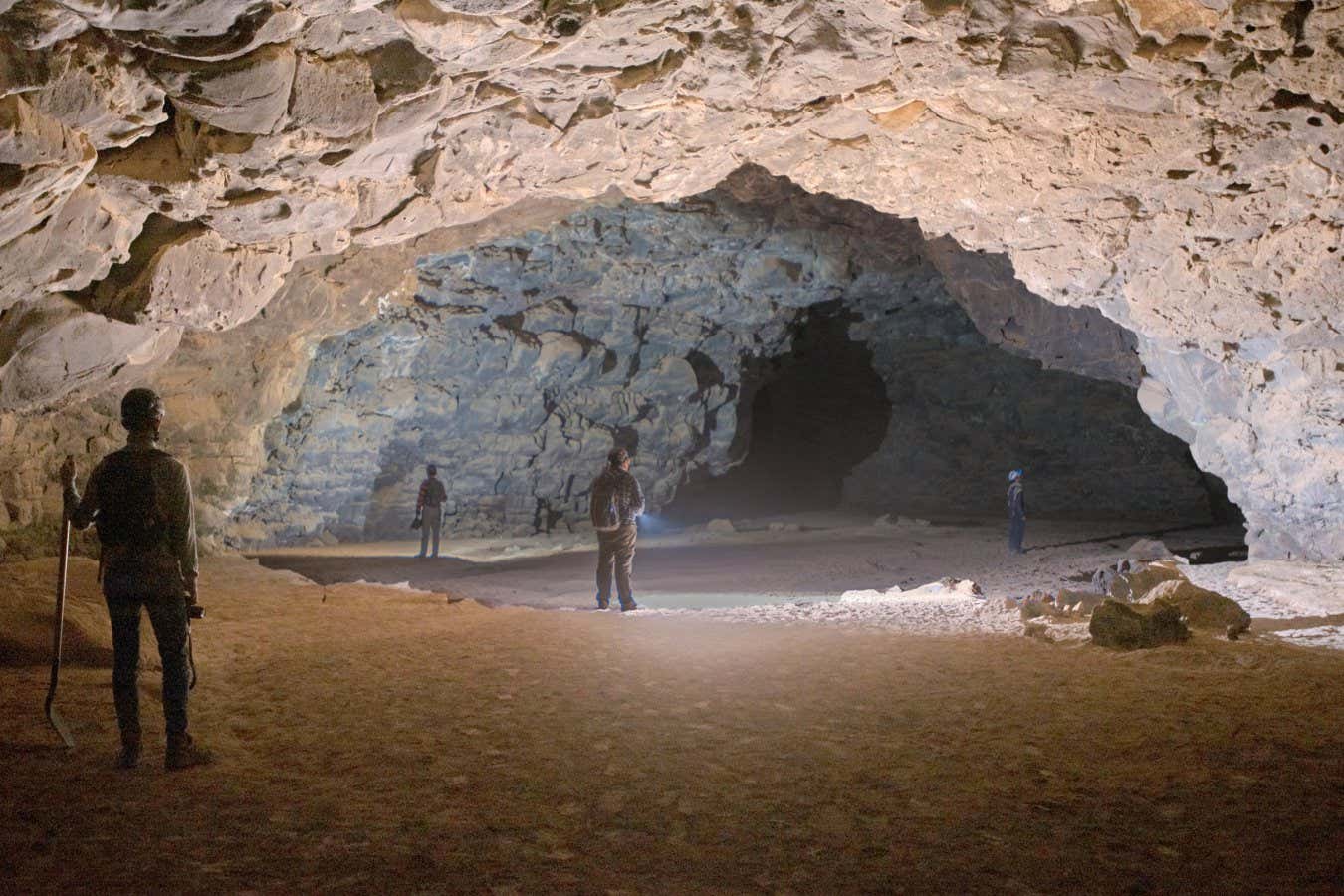
An international research team has found artifacts and elaborate rock art in the lava tube of Umm Jirsan in Saudi Arabia, suggesting that the site provided shelter for ancient humans for over 7,000 years.
Published last month, the study, First evidence for human occupation of a lava tube in Arabia: The archaeology of Umm Jirsan Cave and its surroundings, northern Saudi Arabia, concluded that the area was a key transitory location for cultural trade between ancient people.
Previously, desert studies of ancient Arabia faced the problem that organic artifacts were rarely found due to the aridity of the region. However, by researching inside lava tubes and caves, archaeologists have been able to find a greater quantity of surviving objects which were effectively protected from extreme weather conditions.
Rock art recorded at Umm Jirsan. Photo: https://doi.org/10.1371/journal.pone.0299292.
Based on rock art and animal bones found at Umm Jirsan, the research team believe that the lava tube would have been a key location for livestock herders. The extensive cave art includes six animal herding scenes, 23 identifiable depictions of sheep, 15 of ibex, seven of goats, and two of cattle.
The evidence found at Umm Jirsan dates from the Neolithic (10,000 B.C.E.) to the Chalcolithic/Bronze Age (around 2,000 B.C.E.). The artifacts and rock art found at the site demonstrates that the site was occupied repeatedly and periodically by human groups for at least 7,000 years.
A lava tube is a cave-like formation created after volcanic activity. Umm Jirsan is located less than 80 miles north of one of Saudi Arabia’s oldest cities and one of Islam’s most sacred cities, Medina, in the Harrat Khaybar volcanic field in the Saudi Arabian desert. The last period of volcanic activity is believed to have taken place at Harrat Khaybar between 600 and 700 C.E. Umm Jirsan is made up of just under a mile of tunnels, making it the longest lava tube system in Saudi Arabia.
The rock art of Umm Jirsan, showing identifiable species including sheep (A), goat and two stick figures (B), long-horned cattle (C), and ibex with ribbed horns and coat markings (D). Photo: https://doi.org/10.1371/journal.pone.0299292.
Mathew Stewart, who co-authored the paper, said: “Our findings at Umm Jirsan provide a rare glimpse into the lives of ancient peoples in Arabia, revealing repeated phases of human occupation and shedding light on the pastoralist activities that once thrived in this landscape.”
The study concluded that Umm Jirsan did not appear to have “served as a permanent habitation location, but rather as a site that likely lay on herding routes and that allowed access to shade and water for passing herders and their animals. Prior to this, as well as during pastoral periods, the lava tube was likely also linked with hunting activities, which probably remained a cornerstone of local economies into the Bronze Age.”